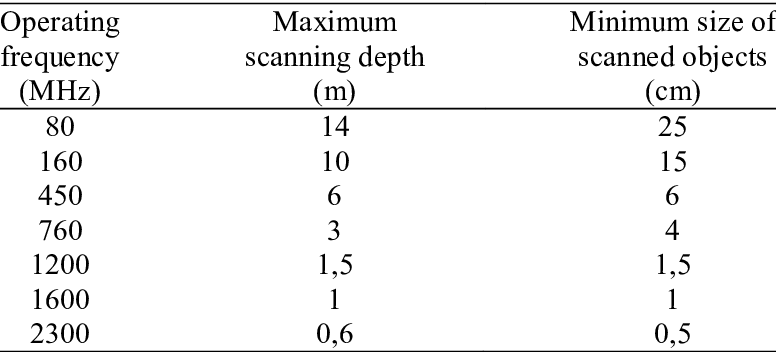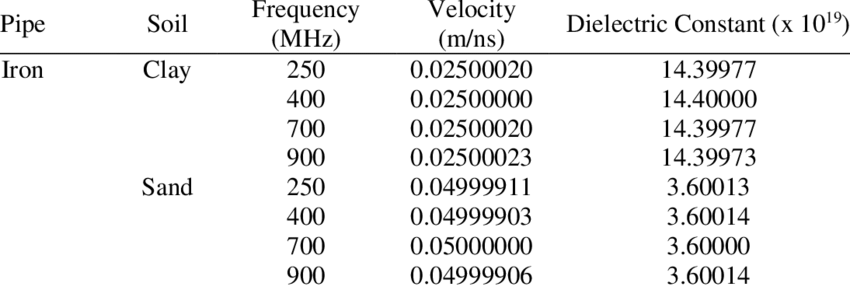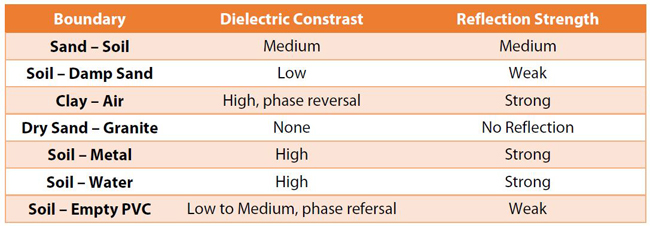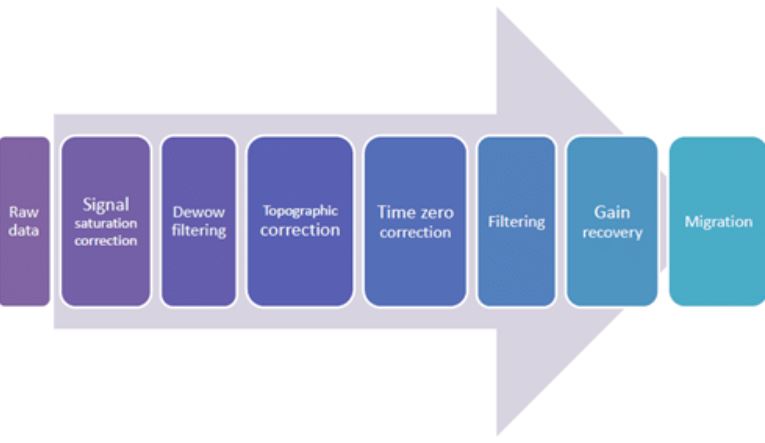Listen to this post. (2 minutes 10 Seconds)
In this post, We go through twelve (12) limitations of Ground Penetrating Radar (GPR), that encompass a range of challenges that can impact its effectiveness in geophysical surveys and structural investigations.
Before you scan, you should know the complexity of data interpretations.
Here is a comprehensive list of some of those limitations:
Contrast Requirements
GPR's ability to identify a target depends heavily on the contrast between the target and its surrounding material. Low contrast scenarios, such as a small PVC pipe in dry sand with similar dielectric properties, pose significant challenges for accurate detection.
Comparison of velocity and dielectric constant of iron pipe at clay and sand soil.
Comparison of velocity and dielectric constant of PVC pipe at clay and sand soil.
Inability to Determine Composition
GPR can detect variances and contrasts but cannot specify the material composition of detected objects. Identification often relies on probabilities and educated guesses, necessitating extensive training and experience.
Subsurface Conditions Impact
Highly conductive materials, including wet clay and areas with high salt content, can absorb and scatter the GPR signal, reducing its depth penetration and overall effectiveness.
The strength of a reflection is proportional to the dielectric contrast between the target and the host materials. The greater the contrast, the brighter the reflection.
Ground Obstructions
Physical obstructions, such as curbs, buildings, and uneven terrain, can severely limit the comprehensiveness of a GPR survey, affecting data collection accuracy.
Signal Attenuation
Signal strength can be lost through soil conductivity, where the GPR wave excites free electric charges causing energy loss due to friction; scatter, where heterogeneities within the soil cause micro-reflections scattering the signal; and reflection events, where signal energy is reflected back towards the surface by boundaries between materials with different dielectric properties.
Correlation between antenna frequency and depth of investigation.

Limited Depth Penetration
The radar pulse frequency limits the penetration depth of GPR, with higher frequencies providing better resolution but shallower penetration and lower frequencies offering deeper penetration but less detail.
Congested Rebar
In structures with closely spaced or layered rebar, GPR signals may not penetrate beyond the first layer of metal, limiting the depth of investigation.
Calibration Requirements
Accurate determination of object depth, material thickness, or identification may require calibration against known conditions or intrusive testing for verification.
Limitations in Identifying Material Types
GPR may struggle to definitively identify the type of material of detected objects without additional information or (DT) testing.
Sensitivity to Environmental Conditions
Environmental conditions, such as soil moisture levels and the presence of salts or other conductive materials, can affect GPR effectiveness.
False Positives (Airwaves)
Airwaves, reflections from surface objects like trees or buildings, can create false positives in GPR data, appearing as subsurface objects due to the way GPR measures and represents data based on signal return time.
Conclusion
Understanding these limitations is crucial for optimizing the use of GPR technology in appropriate applications, ensuring more accurate and reliable results. By acknowledging these constraints and employing a combination of technologies where necessary, professionals can navigate the challenges posed by GPR and leverage its capabilities effectively.




